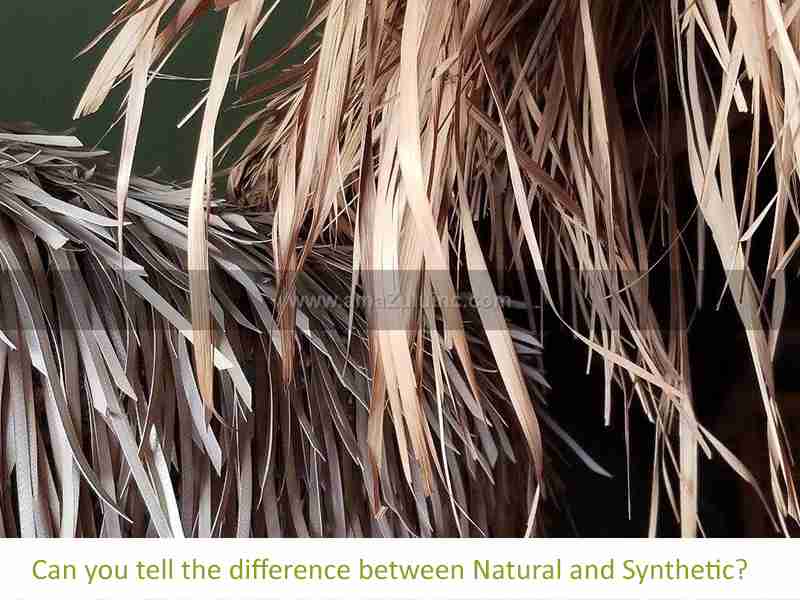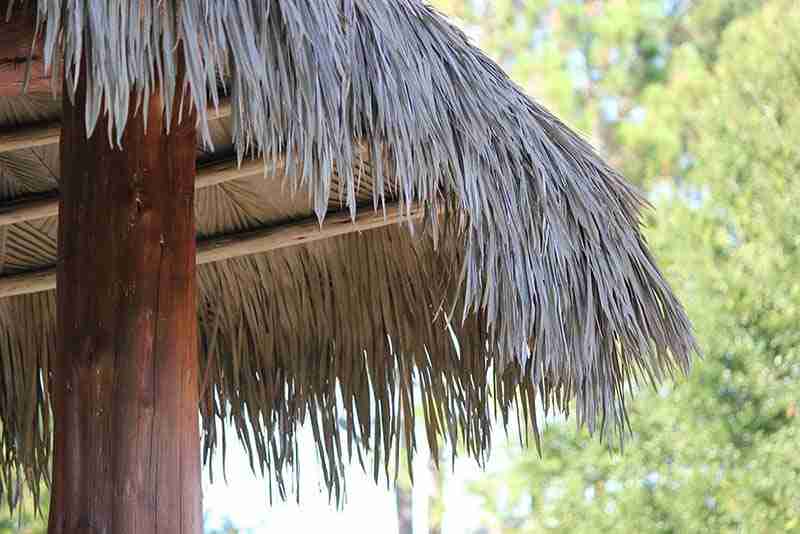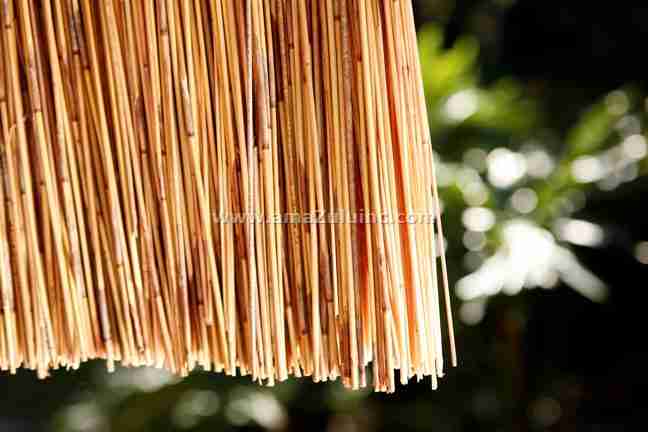When you want to add a tropical touch to a zoo exhibit, restaurant or your own backyard, it’s hard to top tiki hut roofing material. At amaZulu Inc. we offer several eco-friendly building materials. Tiki thatch is a favorite option for both residential and commercial spaces. We’ve assembled this handy FAQ to help you know how to use tiki thatch roofing material effectively.
Tiki Hut Roofing Material FAQs
Are There Different Kinds of Tiki Thatch Roofing?
There are several variations of tiki thatch roofing, so you can pick the right product for your project. For starters, you’ll have to decide whether you want natural or synthetic thatch. Then, there’s the question of which type of thatch you prefer. While thatch certainly has a unique vibe, different thatches offer either a relaxed palm thatch or a more uniform reed thatch. Finally, there’s the matter of form. Most thatch comes in panels for roof tops, but there is also woven round thatch capes used to cover existing canvas umbrellas.
Is Tiki Thatch Roofing Material Hard to Install?
Are you eager to add a tropical atmosphere to a restaurant or bar? Tiki hut roof material is incredibly easy to install. Simply attach tiki thatch roofing panels with staples or nails. Woven tiki hut capes require zip ties.

Should I Install Synthetic or Natural Thatch?
Visually, synthetic tiki hut roofing material is almost indistinguishable from the real thing. How do you decide which one to choose?
Synthetic thatch is a bit more expensive, but it lasts much longer, especially in outdoor applications. The premium versions of amaZulu Inc.’s synthetic thatch products meet fire, wind, and UV ratings for most building codes. Some synthetic tiki thatch roofing products even come with 20-year warranties. That means you may see a better return on your investment. Keep in mind, that synthetic thatch is also recyclable.
Natural thatch offers 100% authenticity at an affordable cost but doesn’t last as long in the elements. It’s ideal for indoor installations. Zoos and animal parks require natural that where there’s concern about animals nibbling on the structures.
Is Tiki Thatch Roofing Waterproof?
Whether your new thatch roofing is waterproof depends on the product you choose and your method of installation. Natural Mexican palm thatch isn’t waterproof. However, natural Tahiti thatch is so thick that it’s 98% waterproof when it’s installed 12″ on center. Synthetic thatches offer possibilities as well. While some products require a subroof or liner in order to keep out the elements, others can do the job themselves. For example, VIVA palm thatch comes with a 20-year limited warranty on waterproofing, color, and texture.
What About Tiki Thatch and Fire Safety?
Whether it’s a private residence or a public facility, fire safety is important. Fortunately, fire retardant is available to both natural and synthetic tiki hut roof materials. It’s a great option that can help ensure that you’re meeting all fire regulations.
We hope these questions have helped you understand the different types of tiki thatch roofing materials. Every product on our website also has individual FAQs. You can visit our individual thatch products pages for more information.
Additional Reading – Tiki Hut Roofing Materials
Are you intrigued by the possibilities that natural and synthetic tiki hut roofing materials offer? Would you like to learn more about these products? Could you use assistance hand-selecting the best options for your tiki hut project? Reach out to the experts at amaZulu Inc. We have the answers that you need, and we’ll be delighted to help you find sustainable building products for your application.





